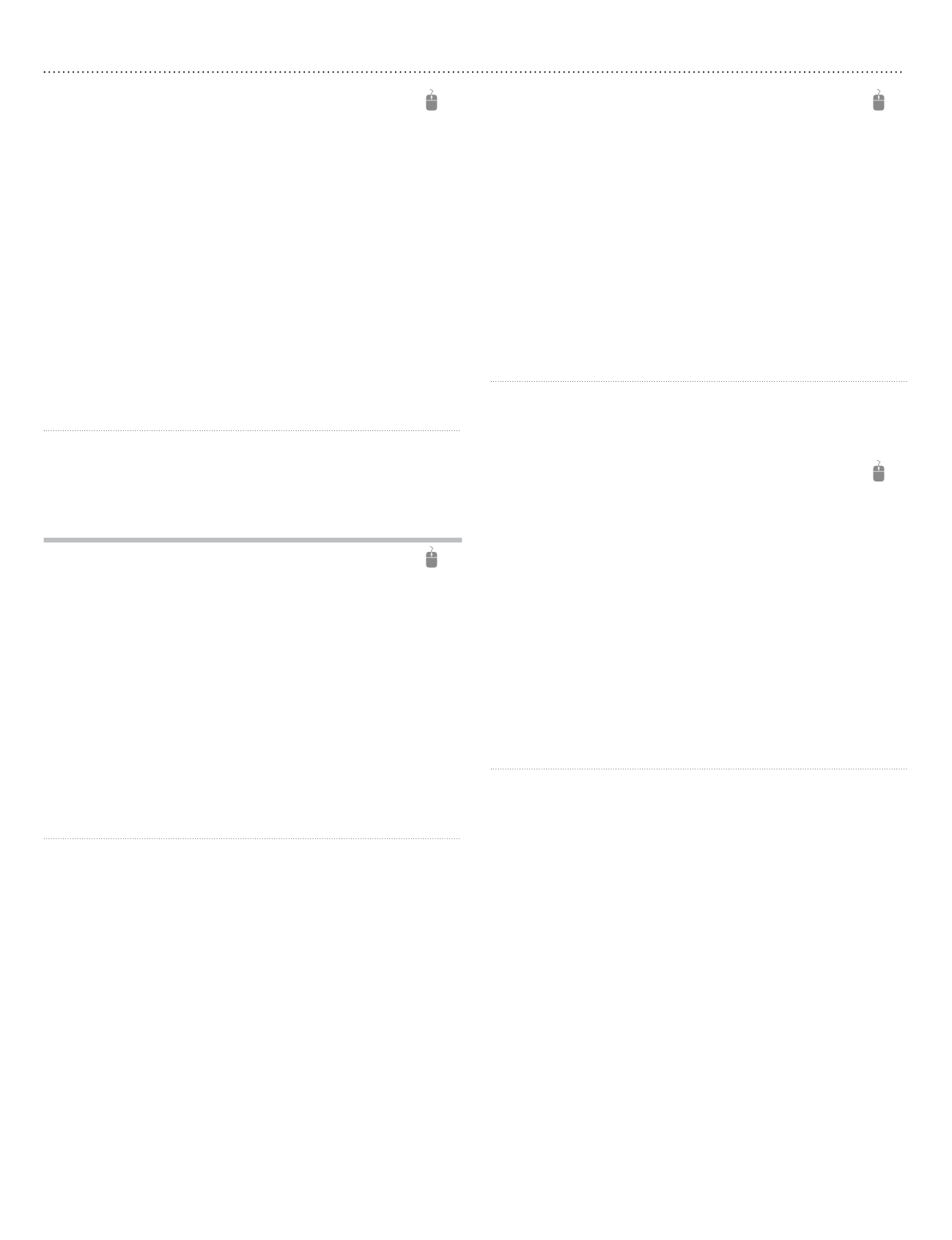

Summer 2016 •
frederick.edu/QuickEnroll• 301.846.2400
19
Introduction to Microsoft Excel 2013
Do you work with numbers? Then you need to master Microsoft Excel
2013 - and this is the place to do it. Even ‘’non-techie’’ beginners will
find it easy to learn Excel in this fun, step-by-step online course. These
lessons will teach you dozens of shortcuts and tricks for setting up fully
formatted worksheets quickly and efficiently. You’ll also learn the secrets
behind writing powerful mathematical formulas and discover how to
use the function wizard to quickly and automatically calculate statistics,
loan payments, future value, and more. In addition, you’ll get tips on
sorting and analyzing data, designing custom charts and graphs, creating
three-dimensional workbooks, building links between files, endowing
your worksheets with decision-making capabilities, and automating
frequently-repeated tasks with macros and buttons. This informative
course covers the new Quick Analysis, Flash Fill, and charting capabilities
available in Excel 2013. This is not a tutorial, but an in-depth class where
you’ll get training, help, and personal support from an experienced
instructor as you’re learning Excel basics step-by-step. By the time you’re
done, you’ll be using this vital Office 2013 application like a pro.
ONL175
|
6 weeks
|
$109 fee
INSTRUCTOR:
CE Instructor
7949
Online
4/8-6/10
5279
Online
7/1–8/12
PROGRAMMING
Introduction to SQL
Learn the key concepts of Structured Query Language (SQL), and gain
a solid working knowledge of this powerful and universal database
programming language. In this course, you’ll learn about the basic
structure of relational databases and how to read and write simple and
complex SQL statements and advanced data manipulation techniques,
discover how to use SQL to sort and retrieve data from tables and how to
use SQL to filter retrieved data, learn how to reformat retrieved data with
calculated fields and how to merge columns and create alternate names
for columns, and learn how to gather significant statistics from data using
aggregate functions. By the end of this course, you’ll have a solid working
knowledge of structured query language. You’ll feel confident in your
ability to write SQL queries to create tables; retrieve data from single or
multiple tables; delete, insert, and update data in a database; and gather
significant statistics from data stored in a database.
ONL140
|
6 weeks
|
$139 fee
INSTRUCTOR:
CE Instructor
7950
Online
4/8-6/10
5276
Online
7/1–8/12
Intermediate SQL
Expand your knowledge of Structured Query Language (SQL), the
industry standard database programming language. In this course, you’ll
learn techniques that will enable you to write powerful queries that
perform complicated searches and sorts on your data. Next, you’ll master
advanced techniques for updating various types of data stored in your
tables. In addition, you’ll use advanced insertion techniques to add data
to your tables and learn how to create, query, and modify temporary
tables. You’ll also see how to implement techniques to handle duplicate
values stored in a table and how to use string functions to perform
complicated searches on strings as well as, how to create queries that
accept input from users. By the end of this course, you’ll be able to use a
wide range of advanced SQL techniques with confidence. Your new skills
with databases will enhance your competitiveness in the technical fields
of software development and database administration.
ONL157
|
6 weeks
|
$139 fee
INSTRUCTOR:
CE Instructor
7946
Online
4/8-6/10
5278
Online
7/1–8/12
Introduction to C# Programming
Learn the fundamentals of computer programming with C#, the
in-demand and incredibly useful programming language that
incorporates the best features of Visual Basic, C++, and Java. You’ll first
develop your understanding of programming fundamentals: input/
output operations, decision making, and looping. Then, we’ll explore
the many benefits of object oriented programming, with plenty of
vivid, real-life examples. Then, you’ll gain hands-on experience with
sequential data files, and you’ll be able to build a professional-looking
and intuitive Graphical User Interface (GUI) application on your very own
computer. Because there is no better way to learn programming than
hands-on practice, almost every lesson includes practical examples and
assignments you can use to develop your knowledge of programming.
Learn to program the right way: by using a state-of-the-art language to
build impressive applications on your schedule and on your very own
computer.
ONL183
|
6 weeks
|
$139 fee
INSTRUCTOR:
CE Instructor
7947
Online
4/8-6/10
5280
Online
7/1–8/12
COMPUTER &TECHNOLOGY
Note:
ONL classes start the Wednesday of the second full week of each
month. During the registration process you will select the month to begin the
class. Students will have six (6) weeks from the class start date to complete
the class.


















